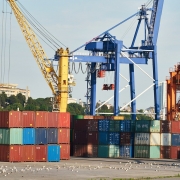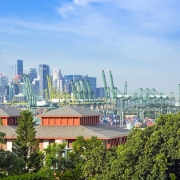What is the SIOJRI Growth Triangle?
Topic of Study [For H2 History Students]:
Paper 2: Economic Development after Independence
Section B: Essay Writing
Theme II Chapter 1: Paths to Economic Development
Growth Triangle: What is it about?
In December 1989, the Deputy Prime Minister of Singapore, Goh Chok Tong, proposed the idea of a ‘Growth Triangle’. Countries could capitalise on the complementarity of resources and the geographical proximity to promote economic integration.
For Singapore, it had skilled labour and well-developed transportation and communications infrastructure. For Malaysia and Indonesia, Johor and Riau Islands had abundant natural resources like gas, water and land.
Thus far, the “Growth Triangle” has been implemented through a series of bilateral arrangements, rather than through one multilateral agreement, with development primarily led by the private sector. The three governments in turn coordinate investments, immigration, and other policies and plans to adjust to the requirements of the private sector.
An excerpt from “The Growth Triangle of Singapore, Malaysia and Indonesia” by Terence P. Stewart and Margaret L. H. Png.
The SIJORI
The Singapore-Johor-Riau (SIJORI) Growth Triangle was created as a tripartite arrangement between Singapore, Malaysia and Indonesia on 20 December 1989. Notably, the Singapore-Riau link had contributed to the development of industrial parks and tourist resorts in the Indonesian islands like Batam and Bintan.
SIJORI was formed in 1989 and covers a population of more than 8 million people. It is built on a vertical division of labour, whereby Singapore serves as the supplier of advanced electronic infrastructure, technology, financial and insurance services, a comfortable international entrance port, and international know-how. The Batam island (in Riau, Indonesia) supplies low-cost labour and land, whereas Johor (Malaysia) provides semi-skilled labour, industrial sites and competence.
An excerpt from “Rethinking Regionalism” by Fredrik Söderbaum.
What can we learn from this article?
Consider the following question:
– Assess the view that regional cooperation was vital in shaping the economic development of Singapore in the 1990s.
Join our JC History Tuition to learn more about Paths to Economic Development in independent Southeast Asia. The H2 and H1 History Tuition feature online discussion and writing practices to enhance your knowledge application skills. Get useful study notes and clarify your doubts on the subject with the tutor. You can also follow our Telegram Channel to get useful updates.
We have other JC tuition classes, such as JC Math Tuition and JC Chemistry Tuition. For Secondary Tuition, we provide Secondary English Tuition, Secondary Math tuition, Secondary Chemistry Tuition, Social Studies Tuition, Geography, History Tuition and Secondary Economics Tuition. For Primary Tuition, we have Primary English, Math and Science Tuition. Call 9658 5789 to find out more.




